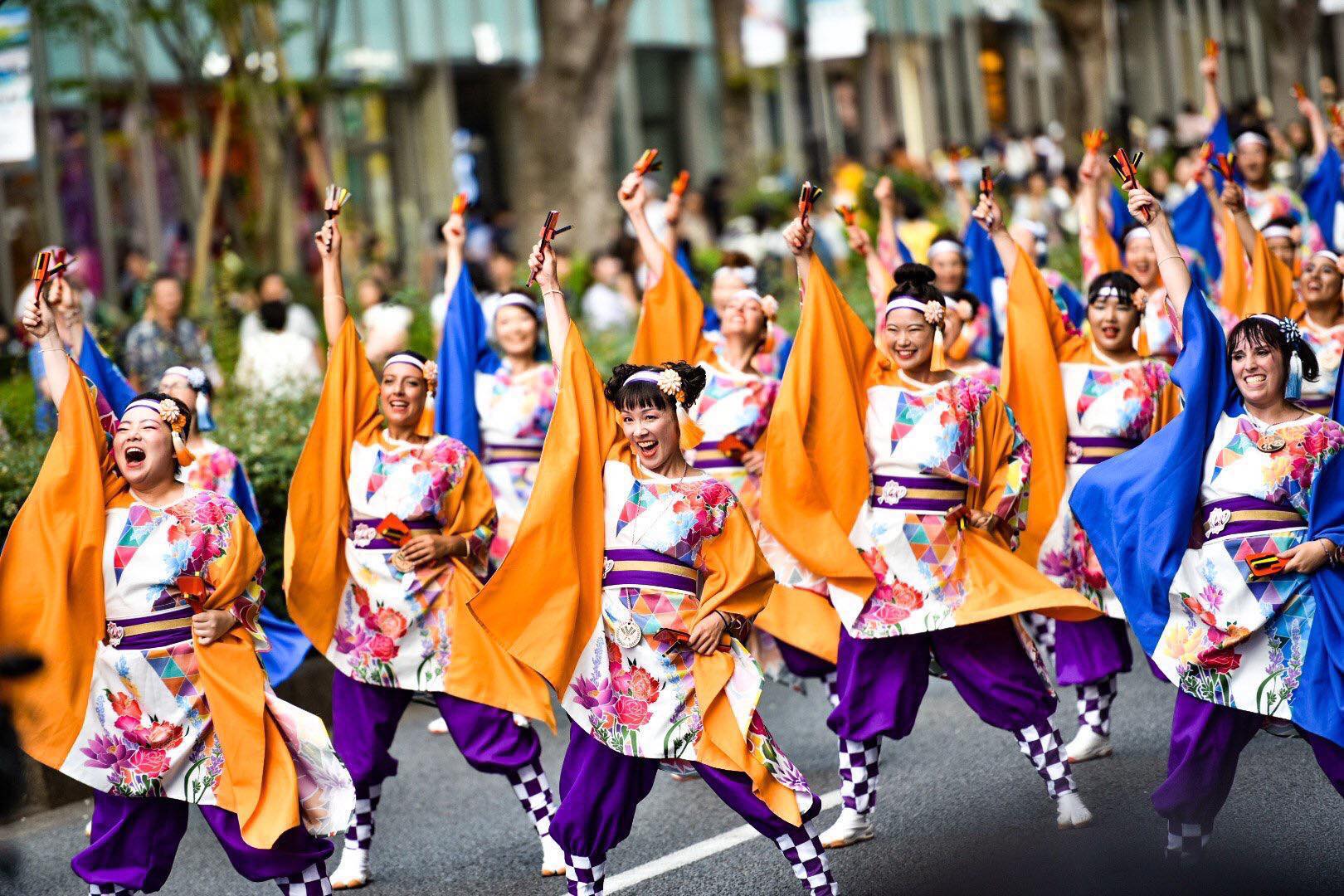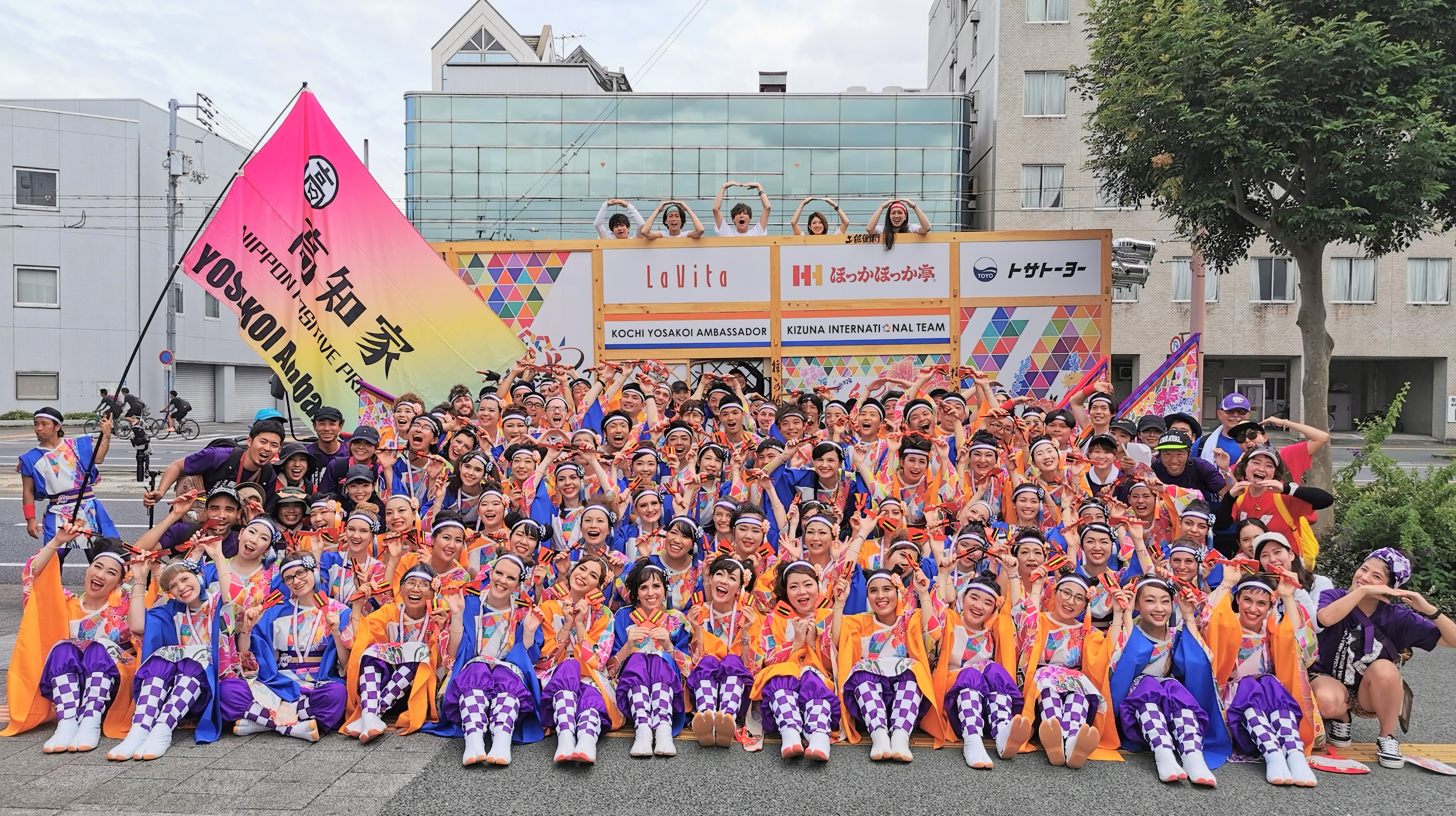Yosakoi – The Dance Style from Kochi Taking the World by Storm

©Yuji Fujita
Every year, from 9th to 12th August, roughly 20,000 people from Japan and abroad travel to Kochi City on the island of Shikoku to take part in the Yosakoi Festival. The festival is comprised of competitions and performances across 16 different venues, and participants flock from 29 different countries to be a part of this dynamic and energetic event. Mayuko Kurita, from Yokohama, who has been performing as part of two different Yosakoi teams, tells us about the appeal of the dance.
For a dance routine to count as Yosakoi there are just three simple rules: the dancers must hold traditional naruko (wooden clappers); they must move forward as they dance; and at least one phrase from Yosakoi-bushi – the original yosakoi music – must be used. Beyond these rules, teams have the freedom to make their routines, costumes, and music as unique as they like. While wholeheartedly embracing this freedom, most teams favour performances that are colourful and upbeat, and this really seems to be the true spirit of Yosakoi. At the summer competition, Mayuko tells us that it is very difficult to beat the Kochi teams – after all, it was in Kochi that the dance itself was born. But even if winning is unlikely, the smiles are ever-present, and the energy infectious.
Although Yosakoi looks as if it may have been around for centuries, it was actually invented in post-war Japan in 1954, as a way to boost economy of the city of Kochi. Originally limited to Kochi, Yosakoi is now popular throughout Japan, and is open to virtually all ages. In Mayuko’s international team – KIZUNA International – there are dancers ranging from age 16 to age 68. What is more, as of this year, the rules were changed regarding the minimum age so that now anyone over the age of six can join so long as they have an accompanying guardian.

All sorts of other dance styles are incorporated into Yosakoi routines, such as samba, jazz, or even hip hop. Mayuko points out that at the 2019 Harajuku Super Yosakoi, the Lotte-Ghana-Yosako-ren team incorporated Ghanaian dance into their routine. This uniqueness of the teams is what makes Yosakoi hugely enjoyable not only for those participating, but also for the spectators, who are witness to new and exciting dances each year. The membership of the international teams is varied; at KIZUNA International, half of the participants are Japanese, but the other half are foreign, with participants from 18 different countries and regions, from across the U.S., Europe, and Asia. When asked why Yosakoi might be so popular with people from all around the world, Mayuko responds, ‘While dancing, we can communicate with each other, even without speaking the same language. Dancing Yosakoi, you can feel the atmosphere and culture of Japan’.
Yosakoi is not only notable for its popularity with foreigners, but for its popularity among young Japanese people too. Mayuko suggests that this may be because Yosakoi is effectively new culture. ‘Whereas other festivals with ancient origins may centre around the worship of a deity, in Yosakoi, we are the main characters. Anyone can join, regardless of religion, race, gender, or age’.
At university, during a semester abroad in the Basque Country, Spain, Mayuko introduced Yosakoi to local Basque people, teaming up with other Japanese students to offer live performances, as well as providing workshops for her Spanish hosts to allow them to experience the dance for themselves. This was perhaps the first time anyone had introduced the dance in Spain. ‘I wanted to show that Yosakoi can be a common language for all people. Even if meeting for the first time, we can connect through Yosakoi’.
TRENDING
-
The Tattoos that Marked the Criminals of the Edo Period
Traditional tattoos were strong signifiers; murderers had head tattoos, while theft might result in an arm tattoo.

-
Chiharu Shiota, Red Threads of the Soul
Last year, more than 660,000 people visited the retrospective 'Chiharu Shiota: The Soul Trembles' exhibit at the Mori Art Museum.

-
‘Before Doubting Others, Doubt Yourself. Who Can Truly Say a Dish Isn’t What It Used to Be?’
In ‘A Non-Conformist’s Guide to Surviving Society’, author Satoshi Ogawa shares his strategies for navigating everyday life.

-
The Story of Sada Yacco, the Geisha who Bewitched Europe
Described by Dazed magazine as the first beauty influencer, she has been restored to her former glory since 2019.

-
Ito Jakuchu's Naturalist Paintings
From 15 September until 14 October 2018, the Petit Palais showcased the artist's iconic ‘Images of the Colourful Realm of Living Beings’.





